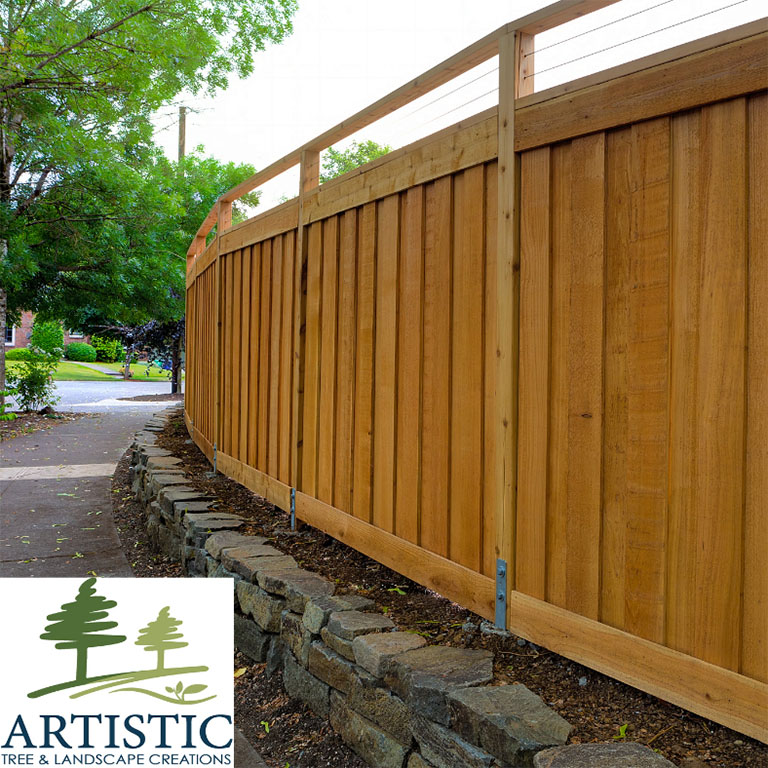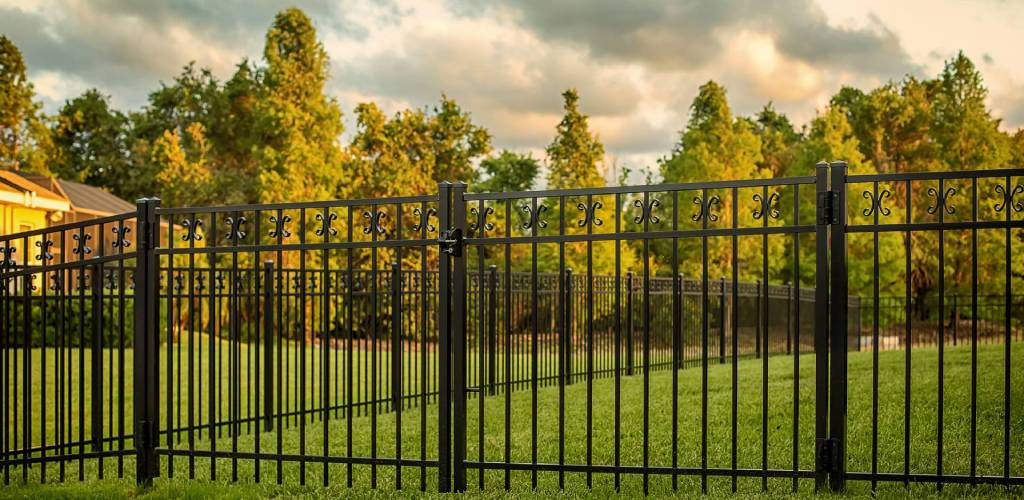All Categories
Featured
Various locations have differing regulations, and comprehending what's called for will assist ensure that your fencing is legal, secure, and developed according to regional standards. Here's an overview to assist you navigate the permitting procedure for fencing installment.
Why Are Permits Needed? Authorizations are required to make sure that the installation of your fence fulfills neighborhood building regulations and zoning laws. These laws remain in area to keep the security, look, and capability of properties in your area. Furthermore, permits aid stay clear of disputes with next-door neighbors regarding residential property lines, fencing elevation, and other structural details.
Local authorities require licenses to keep an eye on things like exposure at crossways, public safety, and potential damages to utilities like water pipes or electrical lines. The process assists maintain your fencing task compliant with safety and security and lawful standards.
Kinds Of Authorizations You May Need. The precise authorizations needed can vary relying on your area and the specifics of your job. Below are one of the most common kinds of permits you may require:
Building Authorization. Several cities and counties need a structure authorization for fences that exceed a specific elevation, normally over 6 feet. This authorization guarantees that your fencing adheres to architectural standards, specifically if it's made from specific materials such as concrete, steel, or brick. Structure licenses are additionally essential when your fencing impacts the general landscape, like producing an audio barrier or blocking a sightline.
Zoning Permit. Zoning permits are released to make sure that your fence follows local zoning laws. These regulations might control where fences can be positioned on your residential property (e.g., front, side, or backyard), just how high they can be, and whether they can be set up near streets or sidewalks. Zoning laws are implemented to protect the overall aesthetics of areas and preserve web traffic safety.
Obstacle Permit. Some locations have problem policies that figure out how much a fence must be from the residential property line, road, or specific public areas. Problem permits are designed to make certain that your fencing doesn't disrupt neighboring residential properties or public locations. A residential or commercial property study might be required to validate home lines before obtaining this sort of license.
HOA Approval. You might need to get approval from the HOA before setting up a fence if you live in an area regulated by a Homeowners Organization (HOA) HOAs frequently have rigorous standards concerning the type of fencing allowed the neighborhood, including its product, shade, and elevation. Always get in touch with the HOA before beginning your job to stay clear of any kind of problems.
Just How to Apply for a Fence Authorization. The process for getting a permit generally entails numerous steps:
Study Citizen Laws. Start by checking your city or area's web site to figure out the particular requirements for fencing setup. You may require to see the regional preparation or structure division face to face for even more in-depth details.
Prepare Your Application. The majority of cities will certainly need an application, which consists of information about your intended fence, such as:
![]()
The sort of fencing material (wood, vinyl, chain-link, and so on) The prepared height of the fencing. The place and dimensions of the fence. A building study (to confirm building lines) Send the Application. After completing the application, send it to the local building or zoning workplace. You may be called for to pay a charge depending upon your location and the dimension of your fence. Charges can differ, however they typically cover the cost of processing your request and assessing your plans.
Await Approval. When your application is submitted, the neighborhood authorities will certainly evaluate your strategies to guarantee they satisfy zoning and constructing demands. This process can take anywhere from a few days to numerous weeks, relying on the intricacy of the job and the quantity of license demands in your location.
![]()
Assessment (If Essential) Sometimes, you may require to arrange an inspection after the fence is mounted to ensure it satisfies the needed requirements. If this step is needed., your neighborhood workplace will let you recognize.
When You Do Not Required a Permit. Not every fence setup calls for a license. Some circumstances where you may not need an authorization consist of:
Mounting a fence that's under a specific elevation (usually 3-4 feet for front backyards) Replacing an existing fence with one that is the very same height and material. Installing a short-lived fence (e.g., for building and construction or horticulture) Also if your job appears little, it's always advisable to check with neighborhood authorities to make certain you're following the right procedure.
Repercussions of Not Getting a Permit. Installing a fencing without the required license can lead to significant consequences, including penalties, removal of the fencing, and pricey reinstallation. In many cases, regional authorities may need you to modify the fence if it does not fulfill code needs. Additionally, not obtaining an authorization might develop disputes with neighbors, particularly if the fencing is put improperly or violates local height policies.
Conclusion. Prior to installing a fence, it's crucial to look into the particular permitting needs in your area. If a license is required and to guarantee that you're following the appropriate treatment, call your regional building or zoning division to locate out. By protecting the correct licenses, you'll stay clear of legal problems and make certain that your fence setup is risk-free, compliant, and easy.
Why Are Permits Needed? Authorizations are required to make sure that the installation of your fence fulfills neighborhood building regulations and zoning laws. These laws remain in area to keep the security, look, and capability of properties in your area. Furthermore, permits aid stay clear of disputes with next-door neighbors regarding residential property lines, fencing elevation, and other structural details.
Local authorities require licenses to keep an eye on things like exposure at crossways, public safety, and potential damages to utilities like water pipes or electrical lines. The process assists maintain your fencing task compliant with safety and security and lawful standards.
Kinds Of Authorizations You May Need. The precise authorizations needed can vary relying on your area and the specifics of your job. Below are one of the most common kinds of permits you may require:
Building Authorization. Several cities and counties need a structure authorization for fences that exceed a specific elevation, normally over 6 feet. This authorization guarantees that your fencing adheres to architectural standards, specifically if it's made from specific materials such as concrete, steel, or brick. Structure licenses are additionally essential when your fencing impacts the general landscape, like producing an audio barrier or blocking a sightline.
Zoning Permit. Zoning permits are released to make sure that your fence follows local zoning laws. These regulations might control where fences can be positioned on your residential property (e.g., front, side, or backyard), just how high they can be, and whether they can be set up near streets or sidewalks. Zoning laws are implemented to protect the overall aesthetics of areas and preserve web traffic safety.
Obstacle Permit. Some locations have problem policies that figure out how much a fence must be from the residential property line, road, or specific public areas. Problem permits are designed to make certain that your fencing doesn't disrupt neighboring residential properties or public locations. A residential or commercial property study might be required to validate home lines before obtaining this sort of license.
HOA Approval. You might need to get approval from the HOA before setting up a fence if you live in an area regulated by a Homeowners Organization (HOA) HOAs frequently have rigorous standards concerning the type of fencing allowed the neighborhood, including its product, shade, and elevation. Always get in touch with the HOA before beginning your job to stay clear of any kind of problems.
Just How to Apply for a Fence Authorization. The process for getting a permit generally entails numerous steps:
Study Citizen Laws. Start by checking your city or area's web site to figure out the particular requirements for fencing setup. You may require to see the regional preparation or structure division face to face for even more in-depth details.
Prepare Your Application. The majority of cities will certainly need an application, which consists of information about your intended fence, such as:

The sort of fencing material (wood, vinyl, chain-link, and so on) The prepared height of the fencing. The place and dimensions of the fence. A building study (to confirm building lines) Send the Application. After completing the application, send it to the local building or zoning workplace. You may be called for to pay a charge depending upon your location and the dimension of your fence. Charges can differ, however they typically cover the cost of processing your request and assessing your plans.
Await Approval. When your application is submitted, the neighborhood authorities will certainly evaluate your strategies to guarantee they satisfy zoning and constructing demands. This process can take anywhere from a few days to numerous weeks, relying on the intricacy of the job and the quantity of license demands in your location.

Assessment (If Essential) Sometimes, you may require to arrange an inspection after the fence is mounted to ensure it satisfies the needed requirements. If this step is needed., your neighborhood workplace will let you recognize.
When You Do Not Required a Permit. Not every fence setup calls for a license. Some circumstances where you may not need an authorization consist of:
Mounting a fence that's under a specific elevation (usually 3-4 feet for front backyards) Replacing an existing fence with one that is the very same height and material. Installing a short-lived fence (e.g., for building and construction or horticulture) Also if your job appears little, it's always advisable to check with neighborhood authorities to make certain you're following the right procedure.
Repercussions of Not Getting a Permit. Installing a fencing without the required license can lead to significant consequences, including penalties, removal of the fencing, and pricey reinstallation. In many cases, regional authorities may need you to modify the fence if it does not fulfill code needs. Additionally, not obtaining an authorization might develop disputes with neighbors, particularly if the fencing is put improperly or violates local height policies.
Conclusion. Prior to installing a fence, it's crucial to look into the particular permitting needs in your area. If a license is required and to guarantee that you're following the appropriate treatment, call your regional building or zoning division to locate out. By protecting the correct licenses, you'll stay clear of legal problems and make certain that your fence setup is risk-free, compliant, and easy.
Latest Posts
Vision Center South Optometrists: Expertise Awaits You
Published Apr 19, 25
2 min read
Study the Fun at Yesterday's Tavern
Published Apr 19, 25
2 min read
Roof Covering for Extreme Weather-- Preparing Your Chicago Home for Winter Season
Published Apr 19, 25
1 min read